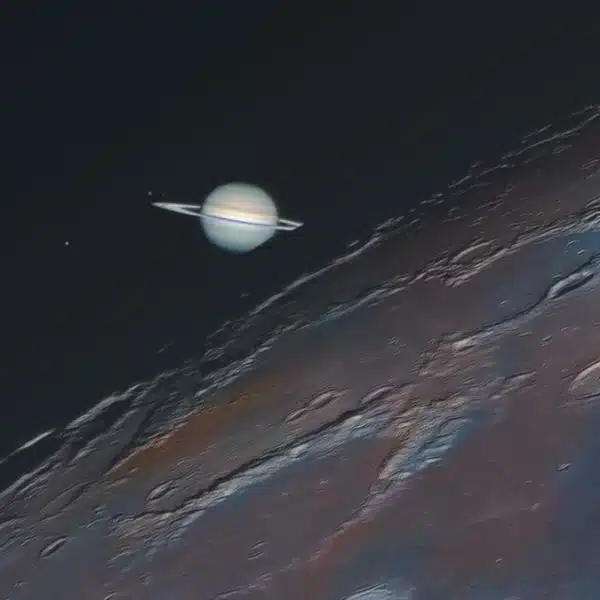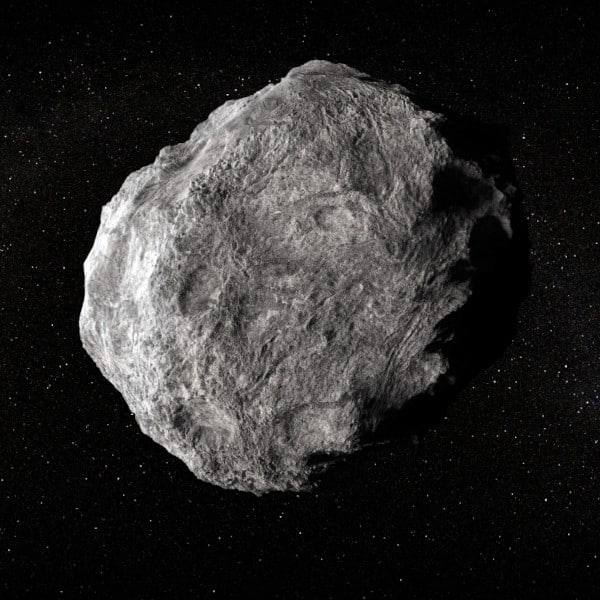
Rendering by NASA
Traveling 1.74 billion miles over 5 years, NASA's Juno space probe entered Jupiter's polar orbit on July 5, 2016. Set to explore the Solar System's largest planet until July 2021, the Juno probe will provide valuable information previously unavailable to scientists thanks to its ability to see below Jupiter's dense cloud cover.
Why study Jupiter? Being the largest planet in our Solar System, scientists believe it to be the cornerstone of planet formation. Its huge mass clearly has an influence on other planets, asteroids, and comets, so an in-depth understanding of Jupiter will help us comprehend all planets. Juno's missions will specifically be looking to see when Jupiter was formed, helping untangle competing theories about its history.
Juno isn't the first space probe to look into the giant planet, though. For eight years, until 2003, the Galileo spacecraft carried out research about Jupiter. However, the Juno probe is unique in that it's powered only by solar panels, something more commonly used in satellites orbiting Earth.
As of May 2019, the spacecraft has completed twenty flybys of Jupiter, which are known as perijoves. Traveling 2,700 miles over the planet's cloud tops, Juno races at a speed of 129,000 miles per hour during these missions. It takes 53 days for Juno to orbit the planet, collecting important data about Jupiter's atmosphere, magnetic and gravity fields, its auroras, and water contents.
Already, interesting discoveries have been made. For instance, scientists have realized that Jupiter's magnetic fields are much more complex than previously thought. In fact, the Juno mission has made the first definitive discovery of a planetary magnetic field that changes over time. It's a discovery that was only possible due to the high accuracy of Juno's instruments.
Previous flybys have also sent back images of volcanic activity of Jupiter's moon Io and highly detailed photos of Jupiter's swirling clouds. Surely as the Juno probe continues its mission, more new and exciting developments will follow.
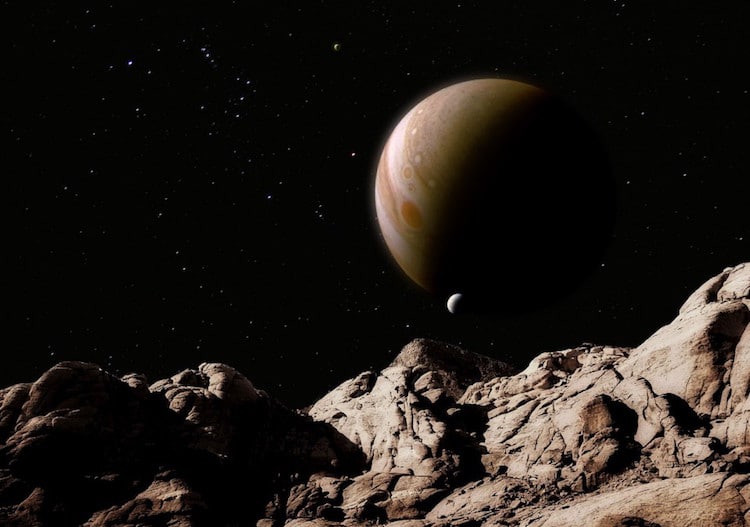
An imagined view from a small, rocky object near Jupiter. Alongside the JunoCam photograph of Jupiter, this image composite includes Galileo images of Europa and Io. (Photo: InvaderXan / supernovacondensate.net)
Facts About the Juno Mission
NASA's Juno mission is breaking boundaries in many ways. Its cutting edge technology is allowing it to learn more than any previous mission about Jupiter, giving scientists unparalleled information about the planet. To give a sense of how revolutionary the mission is, here are some top facts about the Juno space probe.
- Juno can reach speeds of up to 165,000 mph, making it one of the fastest human-made objects ever.
- It will cover nearly 1.8 billion miles during its voyage. If Juno flew at the speed of a commercial jet, it would take nearly 350 years to complete the journey.
- Juno is the first mission to Jupiter to operate using solar power.
- Juno Cam is taking the highest-resolution images we've ever had of Jupiter
- It's the first mission to fly so close (2,600 miles) to Jupiter cloud tops.
- Juno is the first mission to orbit Jupiter from pole to pole
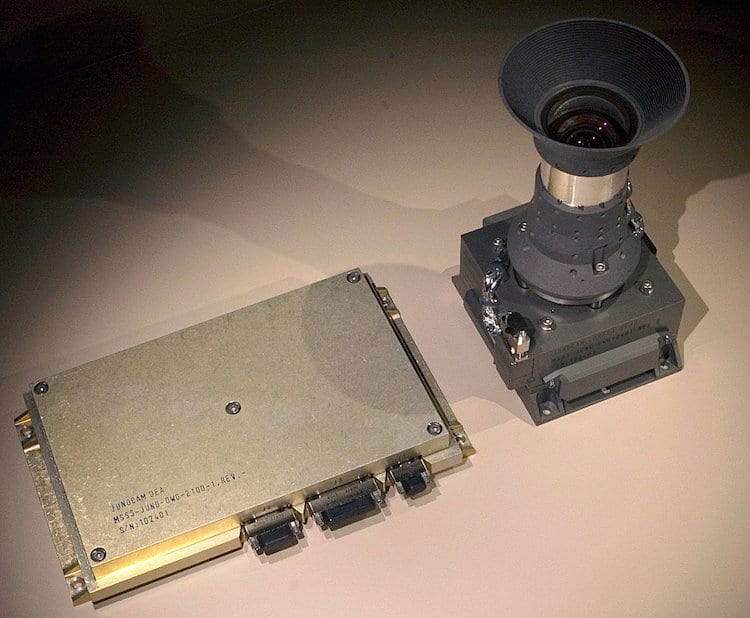
(Photo: Wikipedia)
What is the JunoCam?
The JunoCam is a visible light camera and telescope that beams back images of Jupiter taken from the Juno probe. Specifically, its images are used in public outreach, with the RAW images published for amateur astronomers to download and post-process. In fact, most of the photographs in this article were retouched by people following Juno's course.
The JunoCam has a 58-degree field of view with four filters, allowing for unprecedented images of Jupiter. “Junocam is a wide-angle camera designed to capture the unique polar perspective of Jupiter offered by Juno’s polar orbit. Junocam’s four-color images include the best spatial resolution ever acquired of Jupiter’s cloud tops,” write researchers in a paper for the Southwest Research Institute. “Junocam is on the spacecraft explicitly to reach out to the public and share the excitement of space exploration. The public is an essential part of our virtual team: amateur astronomers will supply ground-based images for use in planning, the public will weigh in on which images to acquire, and the amateur image processing community will help process the data.”
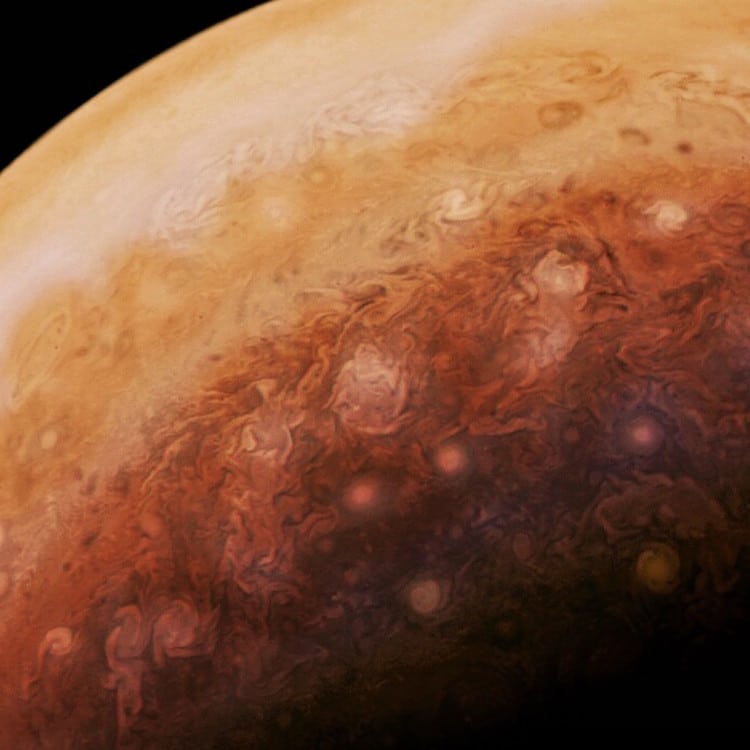
South Pole Storms, Rendering. (Photo: Rachel Richards)
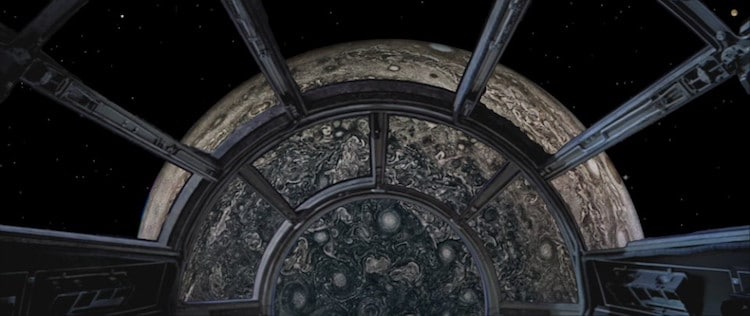
A fictional work, paying homage to one of the cultural icons of science fiction. Millennium Falcon image from “The Empire Strikes Back” film. (Photo: NASA/SwRI/MSSS/Shawn Handran)
How can I help NASA?
Public outreach is fundamental to the Juno probe's missions. NASA asks that professional and amateur astronomers upload telescopic images of Jupiter in order to help them plan upcoming missions. There is even a list of planned observations to help you figure out what information NASA is looking for.
If you are instead interested in photography, all of JunoCam's RAW images are uploaded and free for the public to use in post-processing. NASA encourages creativity as well, with fictional Millennium Falcon inspired images in their featured gallery. It's this true interactive exchange of information that makes the Juno mission unique. In fact, every time Juno is in orbit and taking photos, the public can vote for their favorite captures.
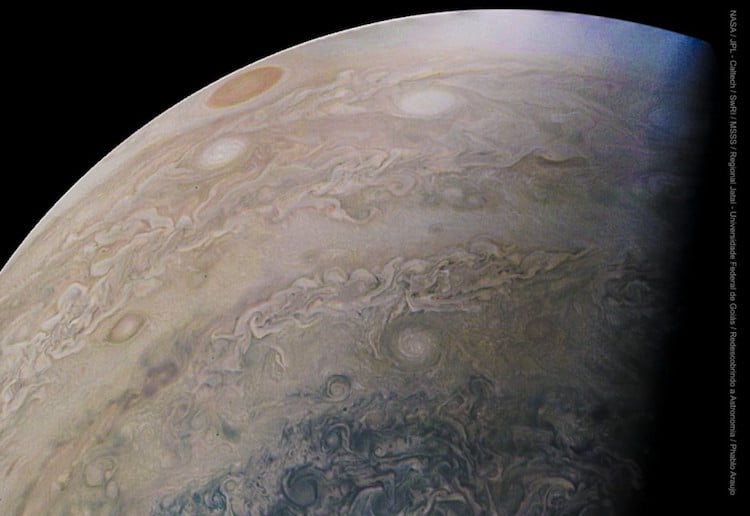
Jupiter's great red spot as viewed from the South Pole. (Photo: NASA/JPL-Caltech/SwRI/MSSS/Phablo Araujo)
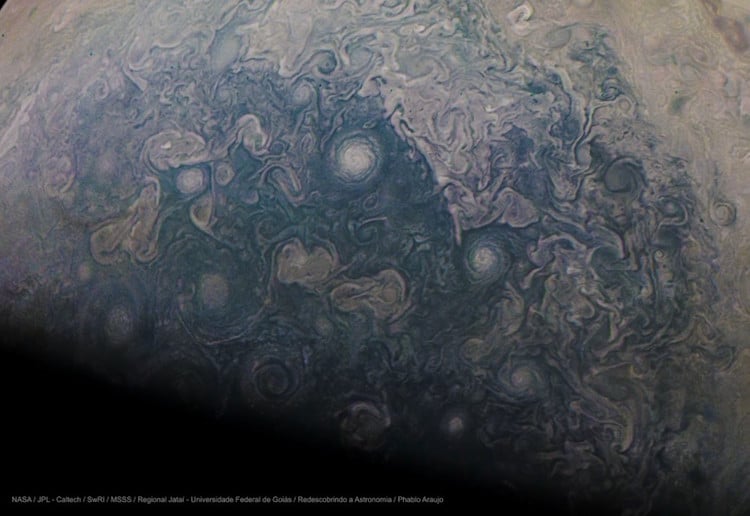
Close in Jupiter's south pole. (Photo: Phablo Araujo)
What's next for the Juno space probe?

Animation of Juno's (purple) trajectory around Jupiter (green) from 1 July 2016 to 31 July 2021. (GIF: Phoenix7777 [CC BY-SA 4.0], via Wikimedia Commons)
Here are some of the incredible photos that the Juno probe has sent back from Jupiter.
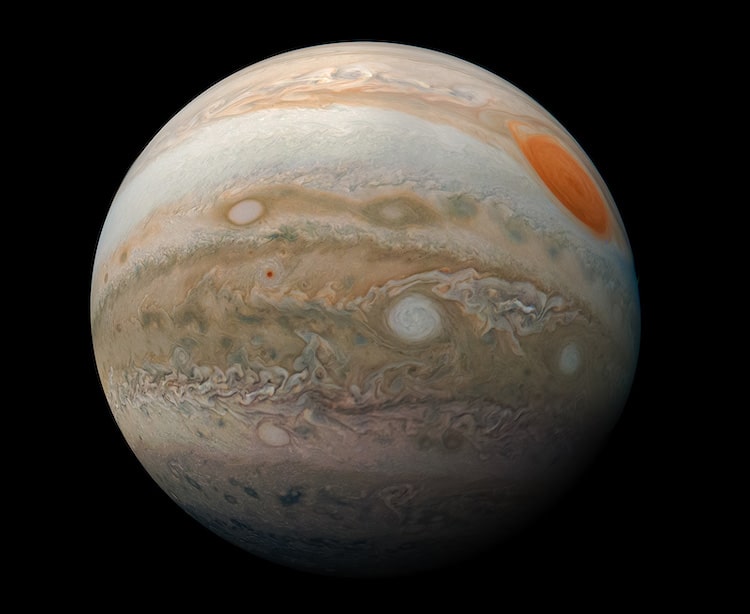
View of Jupiter’s Great Red Spot and turbulent southern hemisphere was captured by NASA’s Juno spacecraft as it performed a close pass of the gas giant planet. (Photo: NASA)
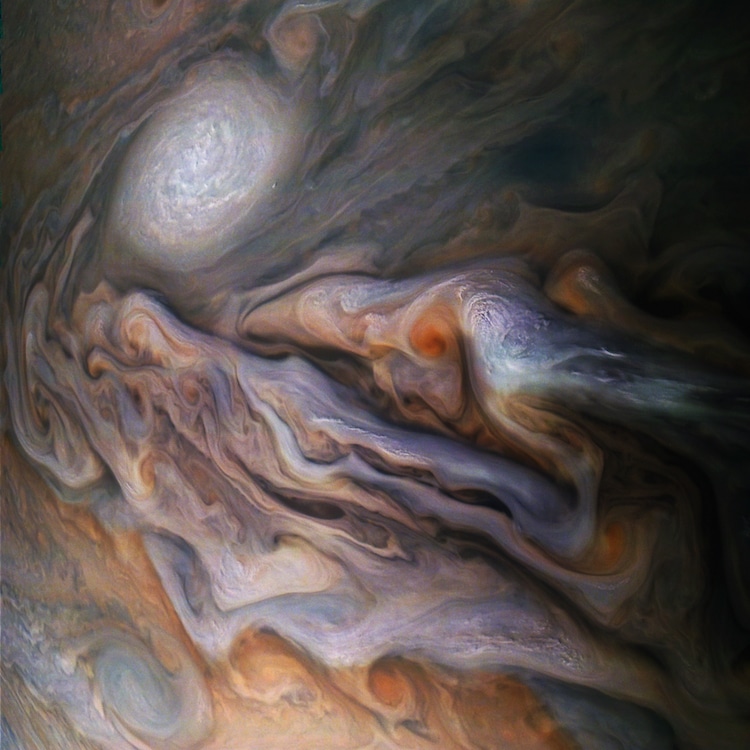
A multitude of magnificent, swirling clouds in Jupiter's dynamic North North Temperate Belt is captured in this image from NASA's Juno spacecraft. (Photo: NASA)
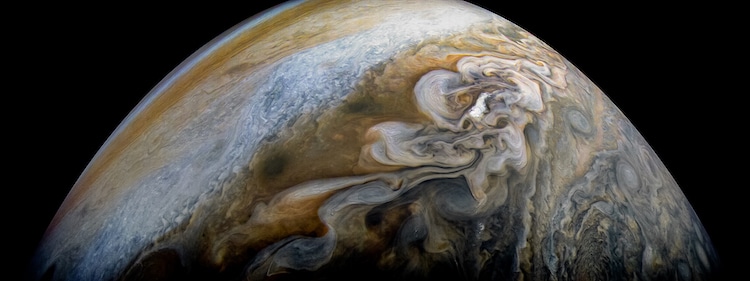
Swirling cloud formations in the northern area of Jupiter's north temperate belt. (Photo: NASA)
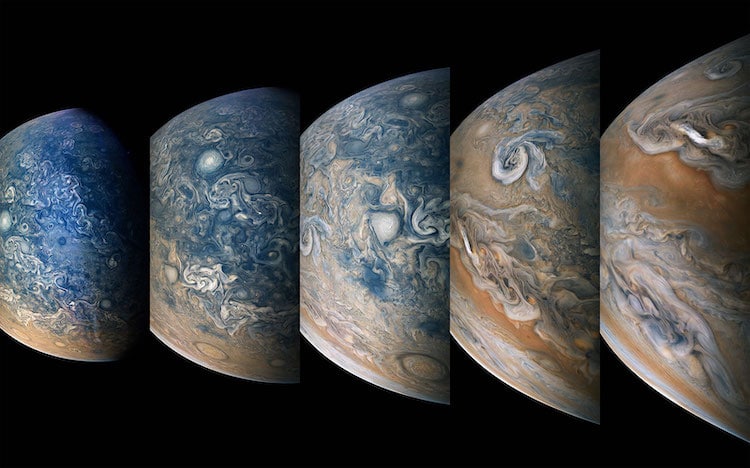
Time-lapse sequence of Jupiter's northern hemisphere. (Photo: NASA)
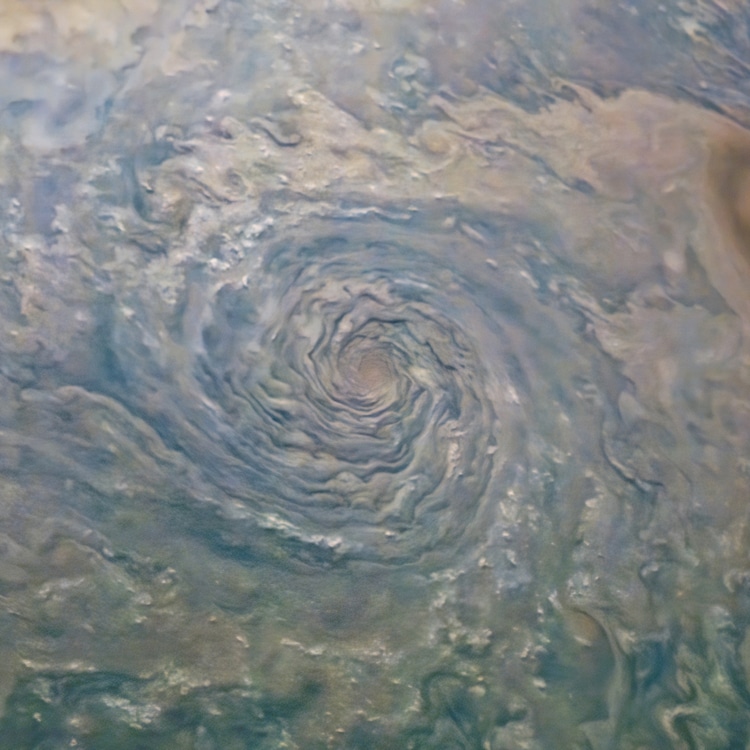
A cyclonic storm in Jupiter’s northern hemisphere. (Photo: NASA)
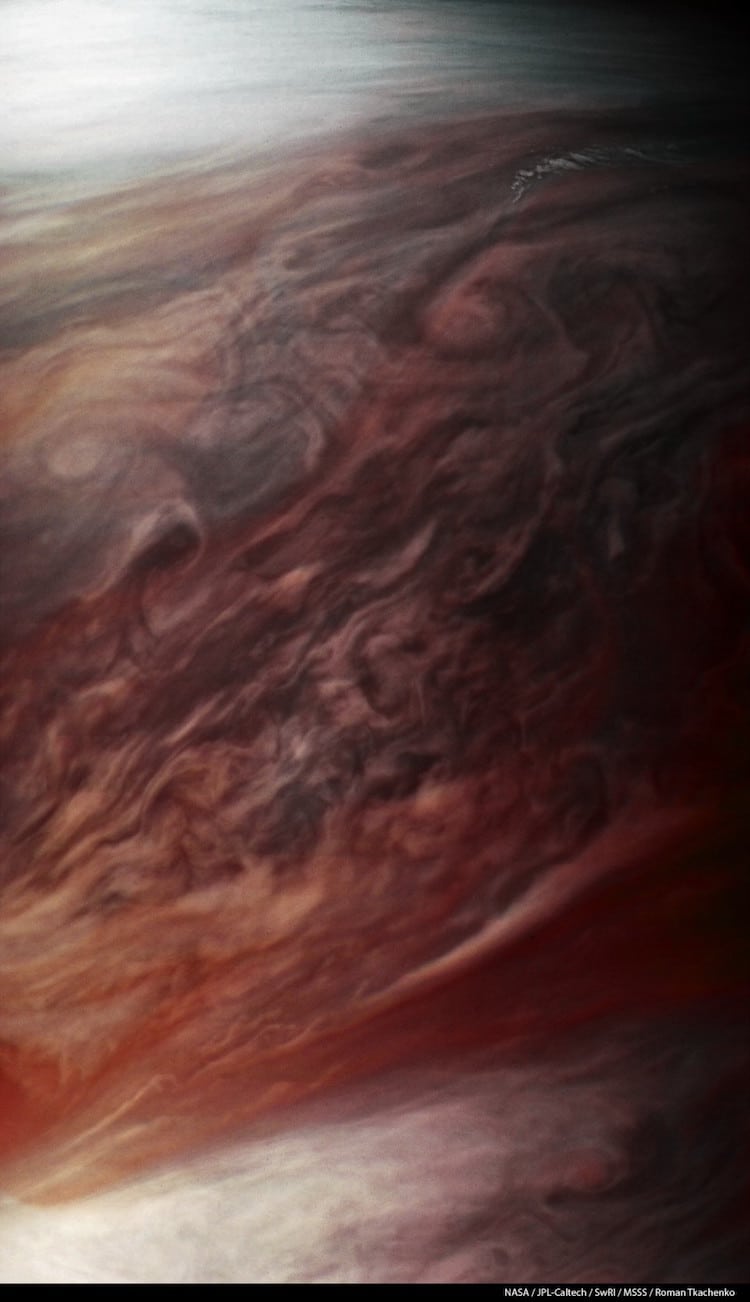
Jovian Flame (Photo: NASA/JPL-Caltech/SwRI/MSSS/Roman Tkachenko)
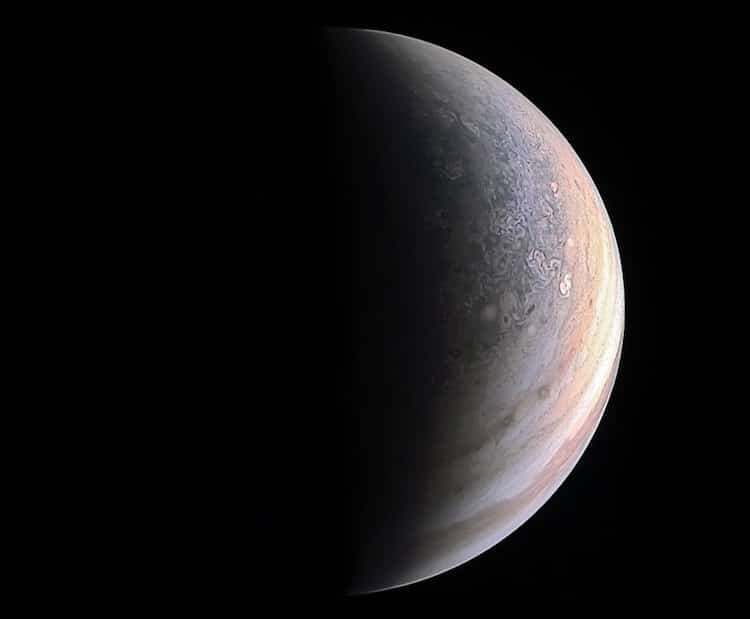
Jupiter on P1 Approach, August 27. (Photo: NASA/JPL-Caltech/SwRI/MSSS/J. Major)
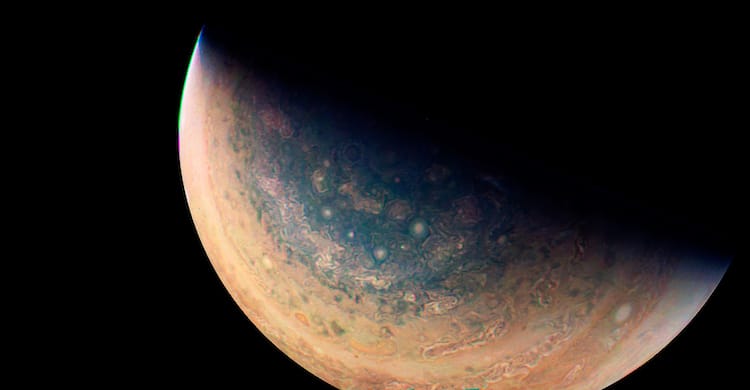
(Photo: Rafael Ruiz)
Learn more about what Juno is teaching us about Jupiter in this NASA lecture.
Juno Probe: Website | Facebook | Twitter | YouTube
This article has been edited and updated.
Related Articles:
LEGO Astronauts Launch Off Towards Jupiter
After 13 Years, the Cassini Spacecraft Says Goodbye with a Final Photograph of Saturn
New Still Photos of Jupiter Are Set into Motion Against a Cinematic Soundscape
NASA Captures Amazing Photos of Jupiter After Successfully Completing Its Eighth Flyby

















































































